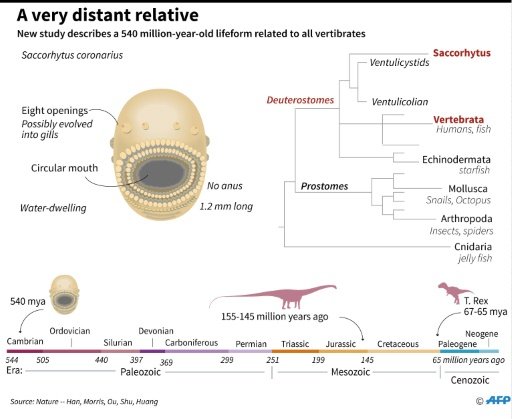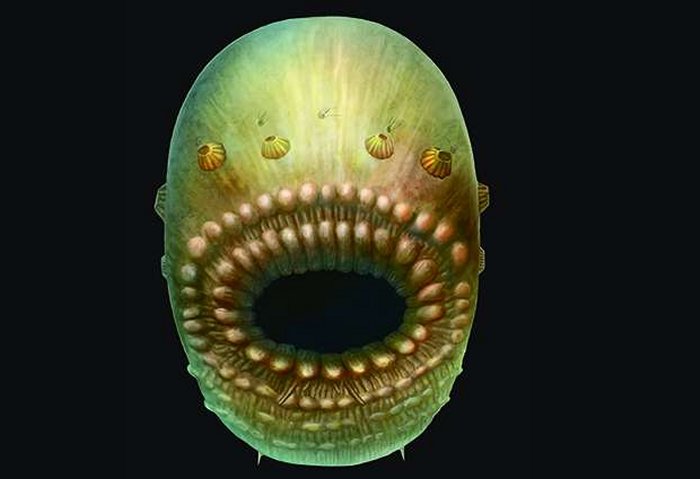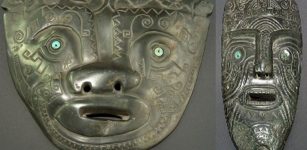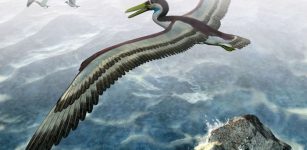Very Unusual Bag-Like Saccorhytus Coronarius Is Humans’ Oldest Ancestor
MessageToEagle.com – Saccorhytus Coronarius is a very unusual bag-like sea creature with a huge mouth and no anus. Scientists now say it’s humans’ oldest known ancestor.
Found in Shaanxi Province, in central China and named Saccorhytus, after the sack-like features created by its elliptical body and large mouth, this microscopic creature lived about 540 million years ago and it was the common ancestor of a huge range of species, including humans.
The Saccorhytus may represent “the primitive beginnings of a very diverse range of species, including ourselves,” Simon Conway Morris, Professor of Evolutionary Palaeobiology and a Fellow of St John’s College, University of Cambridge said.

According a to study published in the journal Nature “the bag-like body bears a prominent mouth and associated folds, and behind them up to four conical openings on either side of the body as well as possible sensory structures. An anus may have been absent, and correspondingly the later openings probably served to expel water and waste material.”
See also:
World’s Oldest Known Face Belongs To A 419-Million-Year-Old Fish
Our Ancestors Had A Tail And Lost It Twice
Our Jaw Evolved From Placodermi: A 423-Million-Year-Old Armored Fish
How Long Does Human Brain Develop?
By studying the minute fossils using an electron microscope and CT scanner, researchers were able to create a picture of what this creature may have looked like.

So this tiny sea-dwelling blob that may have pooped through its mouth.
In the early Cambrian period, the region would have been a shallow sea. Saccorhytus was so small that it probably lived in between individual grains of sediment on the sea bed.
It has previously been suggested that our jaw evolved from Placodermi – a 423-million-year-old armored fish.
MessageToEagle.com
Related Posts
-
 Brutus Of Troy: First King Of Britain Or Just A Myth?
No Comments | Feb 16, 2016
Brutus Of Troy: First King Of Britain Or Just A Myth?
No Comments | Feb 16, 2016 -
 Kudurru Of Melishihu – Stone Records From The Kassite Dynasty In Babylonia
No Comments | Jan 17, 2016
Kudurru Of Melishihu – Stone Records From The Kassite Dynasty In Babylonia
No Comments | Jan 17, 2016 -
 Heatwave: Think It’s Hot In Europe? The Human Body Is Already Close To Thermal Limits Elsewhere
No Comments | Jul 30, 2019
Heatwave: Think It’s Hot In Europe? The Human Body Is Already Close To Thermal Limits Elsewhere
No Comments | Jul 30, 2019 -
 Incredible Ancient Masks – Evidence Of Giants In Bolivia?
No Comments | Mar 25, 2020
Incredible Ancient Masks – Evidence Of Giants In Bolivia?
No Comments | Mar 25, 2020 -
 Ancient France Was Once An Exotic Rainforest And Had Amazon-Like Jungles
No Comments | Sep 18, 2016
Ancient France Was Once An Exotic Rainforest And Had Amazon-Like Jungles
No Comments | Sep 18, 2016 -
 Myths And Legends Reveal Ancient Turtle Worship Linked To The Creation Of The World
No Comments | Aug 29, 2015
Myths And Legends Reveal Ancient Turtle Worship Linked To The Creation Of The World
No Comments | Aug 29, 2015 -
 Incredible ‘White Temple’ Of Chiang Rai – Wat Rong Khun
No Comments | Dec 29, 2015
Incredible ‘White Temple’ Of Chiang Rai – Wat Rong Khun
No Comments | Dec 29, 2015 -
 Hyponatremia: Danger Of Drinking Too Much Water In A Short Time
No Comments | Feb 11, 2016
Hyponatremia: Danger Of Drinking Too Much Water In A Short Time
No Comments | Feb 11, 2016 -
 Acacia Tree Uses Ants As Body Guards And Rewards Them With Shelter And Food
No Comments | Nov 3, 2016
Acacia Tree Uses Ants As Body Guards And Rewards Them With Shelter And Food
No Comments | Nov 3, 2016 -
 Fossils Of Giant 50-Million-Year-Old Pelagornithid Bird Discovered In Antarctica
No Comments | May 21, 2016
Fossils Of Giant 50-Million-Year-Old Pelagornithid Bird Discovered In Antarctica
No Comments | May 21, 2016
